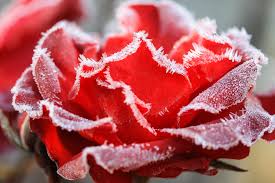
ST. GEORGE — Determining when to plant a garden can be especially confusing in Utah’s unpredictable, varied climate where last-frost dates can vary by many days within just a few miles. Many experienced gardeners have planted and later lost their plants to frost.

Cache Valley presents a perfect example of how fickle Utah’s climate can be, where frost-free days vary from an average of 113 days in Lewiston and Trenton to 158 days on the USU campus. Similar examples are common around the state.
Geographic characteristics of where one lives can help in determining when to plant. When a yard is located in a populated area or on a mountain bench, it usually has a longer growing season. While other areas located at slightly lower elevations where cold air drains and cannot escape have a shorter season.
That is why local commercial orchards are generally located on benches.
Additionally, urban and suburban areas are slightly warmer than surrounding areas due to the urban heat effect, as heat from buildings and warmth generated by sunlight reflected from roads and other surfaces increases temperatures and delays frost. It can be helpful to chat with a local farmer or experienced gardener in your area to determine what works for him or her regarding when to plant.
In addition to frost information, it is important to take into account the needs of the plants. Vegetables planted locally fall into four basic categories: hardy, semi-hardy, tender and very tender. Depending on which category a plant belongs to, planting dates vary from early spring until early summer. Consider the following:
- Hardy vegetables, including asparagus, broccoli, cabbage, onions, peas and spinach, can be planted as soon as the soil is workable in early spring. This usually ranges between 45 and 60 days before the average last frost. These same vegetables can be safely planted until the average last frost date.
- Semi-hardy plants, such as beets, carrots, lettuce and potatoes, can be planted one to two weeks after the hardy group. These can be planted until the average last-frost date.
- Tender vegetables, such as celery, cucumbers, corn and most beans, should be planted on the average last-frost date.
- Very tender plants, such as squash, beans, melons, tomatoes, eggplants and peppers, should not be planted until at least a week after the average last frost. Even if frost does not occur before this time, these plants will not grow well and are more susceptible to disease until warmer weather.
Below are average frost dates for various Utah locations. Note that these dates are averages and can vary from year to year.

More information can be found by contacting your local Utah State University Extension office or by clicking here.
Written by TAUN BEDDES, Utah State University Extension horticulturist
Email:mailto:news@stgnews
Twitter: @STGnews
Copyright St. George News, SaintGeorgeUtah.com LLC, 2019, all rights reserved.